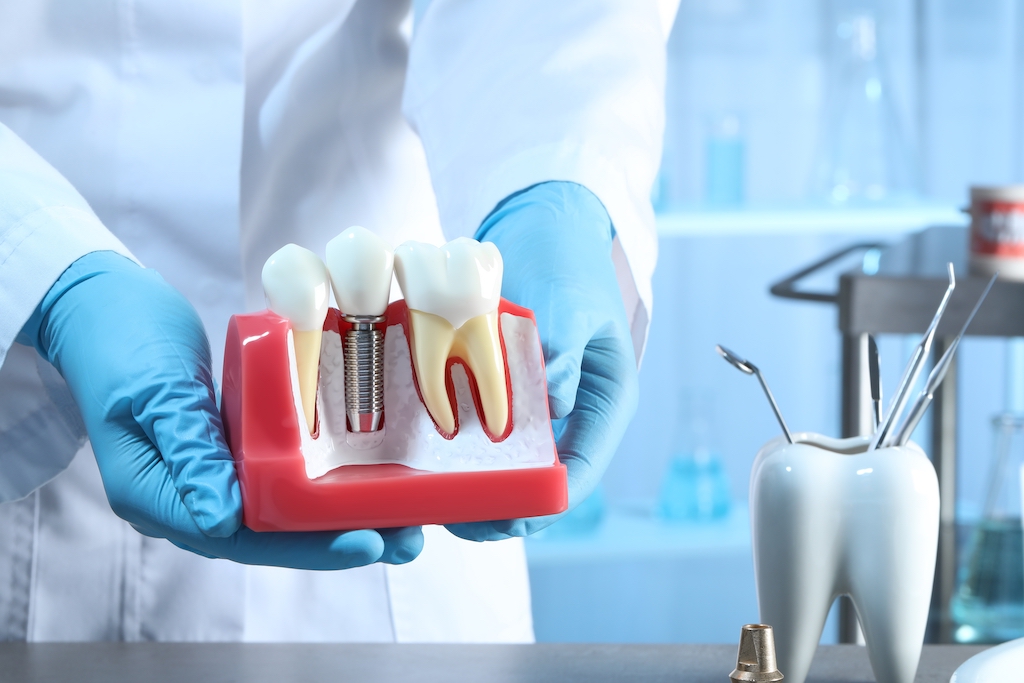 Photo Credit: Courtesy of Pixel-Shot/ShutterstockDental implants have revolutionized the field of dentistry, offering an effective and permanent solution to replace missing teeth. If you have lost one or more teeth due to injury, decay, or other dental issues, dental implants may be the perfect option for restoring your smile, function, and confidence. This article will delve into the world of dental implants, discussing what they are, how they work, their benefits, and what to expect during the implant procedure.
Photo Credit: Courtesy of Pixel-Shot/ShutterstockDental implants have revolutionized the field of dentistry, offering an effective and permanent solution to replace missing teeth. If you have lost one or more teeth due to injury, decay, or other dental issues, dental implants may be the perfect option for restoring your smile, function, and confidence. This article will delve into the world of dental implants, discussing what they are, how they work, their benefits, and what to expect during the implant procedure.
What are Dental Implants?
Dental implants are artificial tooth roots made of biocompatible materials, usually titanium, which are surgically placed into the jawbone to provide a sturdy foundation for replacement teeth. They offer an alternative to traditional dentures and dental bridges, providing a more natural and long-lasting solution to tooth loss. Once the implants are placed, they fuse with the surrounding bone through a process called osseointegration, ensuring stability and durability.
The Dental Implant Procedure
The dental implant procedure typically involves several stages, and it may take a few months to complete the entire process. Here is a brief overview of the steps involved:
Initial Assessment: The first step is a thorough examination of your oral health by a dentist or a dental implant specialist. They will evaluate the condition of your gums, jawbone, and remaining teeth to determine if you are a suitable candidate for dental implants.
Implant Placement: If you are deemed a suitable candidate, dental implant placement surgery will be scheduled. During this procedure, the dentist will surgically insert the implants into the jawbone beneath the gum line. Local anesthesia or sedation is used to ensure a comfortable experience.
Osseointegration: After implant placement, a healing period is required for osseointegration to occur. This process usually takes several weeks or months, during which the implants fuse with the jawbone, creating a strong and stable foundation.
Abutment Placement: Once osseointegration is complete, a small connector called an abutment is attached to the implant. The abutment connects the implant to the replacement tooth or crown.
Restoration: In the final stage, the replacement tooth, which could be a dental crown, bridge, or denture, is custom-made to match your natural teeth. The replacement tooth is then secured to the abutment, completing the dental implant process.
 Photo Credit: Courtesy of New Africa/Shutterstock
Photo Credit: Courtesy of New Africa/Shutterstock
Benefits of Dental Implants
Improved Appearance: Dental implants look and feel like natural teeth, providing a seamless and aesthetically pleasing solution to tooth loss.
Enhanced Speech and Comfort: Unlike dentures, dental implants eliminate the risk of slipping or clicking during speech, offering greater comfort and confidence.
Durability: With proper care, dental implants can last a lifetime, making them a long-term investment in your oral health.
Improved Chewing and Eating: Dental implants restore the full functionality of your teeth, allowing you to eat and chew comfortably without restriction.
Preserved Jawbone and Facial Structure: Tooth loss can lead to bone deterioration in the jaw, resulting in a sunken facial appearance. Dental implants stimulate bone growth, maintaining facial structure and preventing bone loss.
Dental implants have transformed the lives of millions of people, offering a permanent and effective solution for those with missing teeth. With their natural appearance, durability, and improved functionality, dental implants provide more than just a beautiful smile; they enhance overall oral health and quality of life.
If you are considering dental implants, consult with a qualified dentist or implant specialist to assess your eligibility and discuss the best treatment plan for you. Remember that proper oral hygiene and regular dental check-ups are vital to ensure the long-term success of your dental implants and maintain a healthy, radiant smile for years to come.
For more information, visit Dr. Brian A. Levine's social media:

























